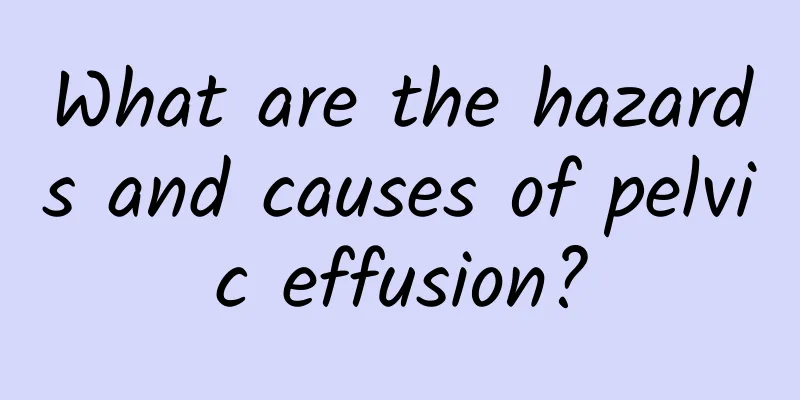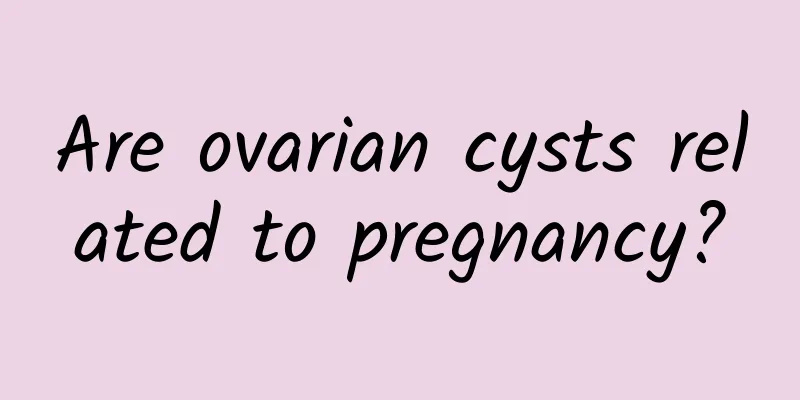What are the hazards and causes of pelvic effusion?

|
Pelvic effusion is a disease that troubles many female friends, and the most serious thing is the harm it brings. So, what are the harms and causes of pelvic effusion? Pelvic effusion can occur after pelvic inflammatory disease, adnexitis or endometriosis. According to pathological factors, it can be divided into physiological pelvic effusion and pathological pelvic effusion. Pathological pelvic effusion is more harmful. Once a woman finds abnormal pelvic effusion, she should go to the hospital for treatment in time. As for pathological pelvic effusion, the causes of pelvic inflammatory disease and adnexitis are mostly related to the patient's bad hygiene habits, such as having sex during menstruation or within one month after childbirth, taking a bath within one month after gynecological surgery, etc. Medical-induced infection caused by improper disinfection of artificial abortion and induced labor can also cause pelvic effusion. If there are chronic infection lesions, it may be inflammation in the pelvic cavity of the gynecological system such as the ovaries and fallopian tubes, causing pelvic effusion, or it may be caused by tuberculosis or tumors. Pelvic effusion is also rarely caused by tuberculosis. The harm of pelvic effusion cannot be ignored. The harm of pelvic effusion is great. The harm of this disease is mainly manifested in the following aspects: 1. Impact on normal life: Pelvic effusion often causes lower abdominal pain, anal distension, back pain, or sudden severe pain in the lower abdomen that gradually turns into distension and pain, which worsens during activities, seriously affecting normal study, life, work, etc. 2. Decreased immunity The systemic symptoms of pelvic effusion are mostly not obvious, sometimes with low fever and fatigue. Some patients with a long course of illness may have symptoms of neurasthenia, such as lack of energy, general discomfort, insomnia, etc. When the patient's resistance is poor, it is easy to have acute or subacute attacks. 3. Disrupt menstruation Patients with pelvic congestion may have increased menstruation; when ovarian function is damaged, there may be menstrual disorders; when the fallopian tubes are blocked by adhesions, it may cause female infertility. When women have pelvic effusion, they should pay attention to it and provide appropriate care and health care at the same time, so that female friends can easily get through this period. |
<<: Is moxibustion effective for adenomyosis?
>>: What to eat after ovarian cyst surgery
Recommend
Diagnosed with Bacterial Vaginosis
How to diagnose candidal vaginitis? This is also ...
Zhang Huimei's 4 secrets to lose weight and redeem herself from the fat
Singer A-mei Chang will serve as a mentor for Zhe...
Can I have a baby if my vulva is itchy?
Does vulvar itching have any impact on pregnancy?...
What symptoms should you pay attention to for uterine fibroids
Uterine fibroids are a common disease among women...
How long does it take to get your period after an abortion? What are the reasons for not getting your period after an abortion?
Abortion is indeed very harmful to women's bo...
Women need to pay attention to the precautions after abortion
Nowadays, abortion is a common surgery that can h...
High-fat diet is harmful to the stomach nerves and makes it more difficult to lose weight
After working so hard to lose a few kilograms, th...
Dietary regulation for women with irregular menstruation
Long-term irregular menstruation is extremely har...
What do you know about the causes of dysmenorrhea?
What do you know about the causes of dysmenorrhea...
What are the items to check for premature ovarian failure
Premature ovarian failure refers to amenorrhea in...
What should women do if they have irregular menstruation?
What should women do if they have irregular menst...
No breast shrinkage! 4 yam breast-protecting recipes
Yams are high in nutritional value and low in cal...
What are the serious hazards of cervical warts in women?
What are the harms of suffering from cervical war...
Differential diagnosis of chronic pelvic peritonitis
Don't be careless if you have pelvic peritoni...
How to diagnose acute adnexitis?
As we all know, acute adnexitis refers to the sym...









